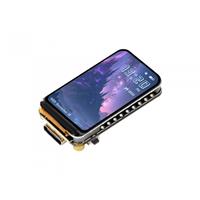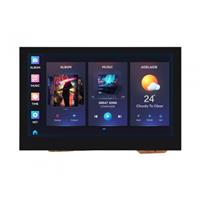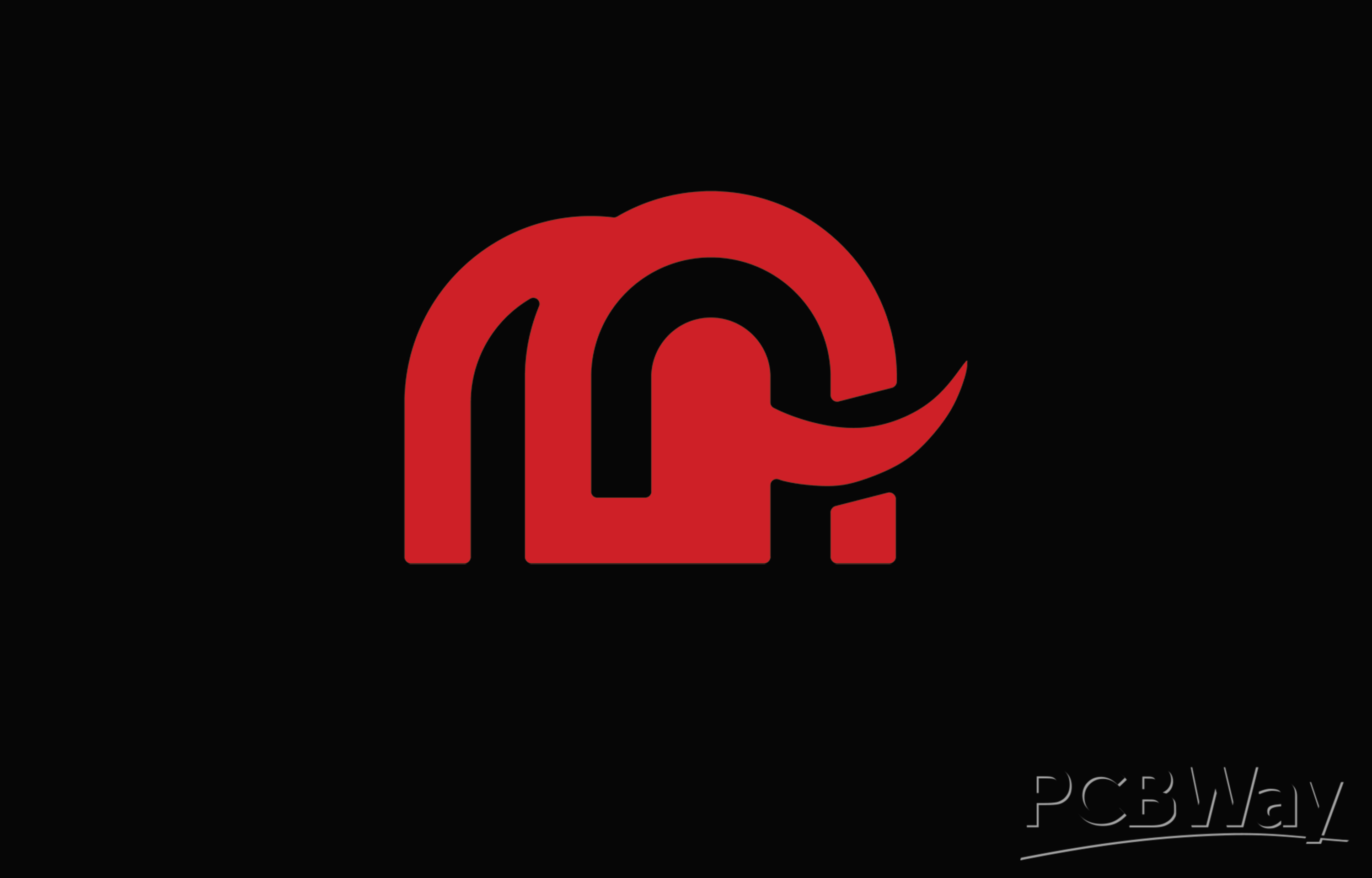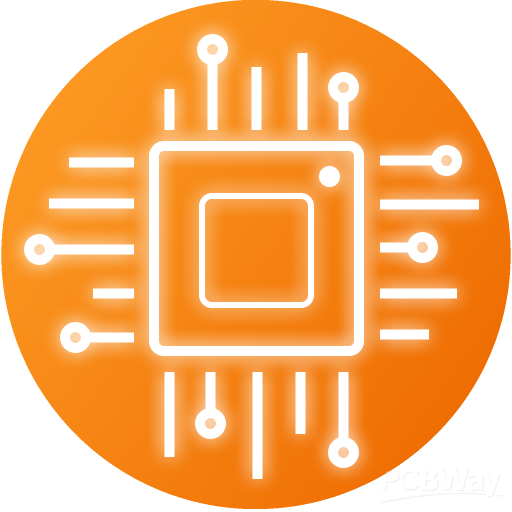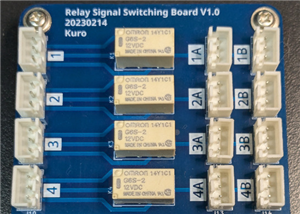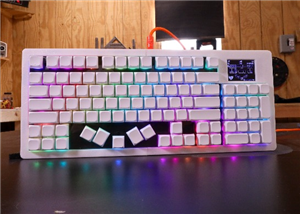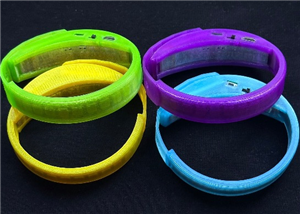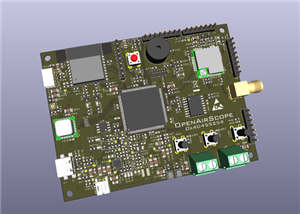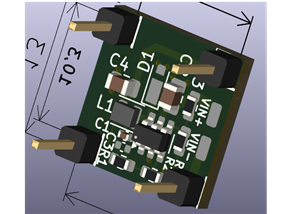
|
KiCADKicad
|
|

|
TinkerCad |
|

|
arduino IDEArduino
|
Teapotlabs BWLR1E: Compact LoRa Environmental Sensor
Teapot BWLR1E is a solar-powered wireless LoRa environmental sensor capable of sensing temperature, humidity, air pressure and air quality using the on-board BME688. With STM32WLE MCU as it's core and AEM10941 for solar charging, the device is capable of multi-year operation with the possibility of indefinite battery-life by utilizing the solar charging capability
Teapot BWLR1E is part of Teapot open-hardware project.
Visit the github project for more detailed informatoin.
Specification
The following are the specification of the device:
- RAK3172: An STM32WLE5CC module,because different countries have different frequency bands, it is recommended that customers buy their own
- AEM10941: Solar energy harvesting
- 3.3V only power/pin.
- 3uA Deep-Sleep
- BME688 for Environmental Sensing
- Switchable TX Power. 14 dBm(50mA) or 22 dBm(140mA) ( on 915MHz frequency )
- Supports LoRaWAN 1.0.3
- 1KM Range
- UART2 breakout for Arduino/Mbed OS/STM32Cube programming
- iPEX antenna connector
- 3.7 Volts LiPo Battery
Schematics

Boards

PCB Render
Built using KiCAD, the board is design to be as small as possible with all components placed on the top side of the PCB. The following are the lists of revision of the board:
- Revision 1: Initial design
- Revision 2: Better trace, use rounded trace and change solar cell wiring to parallel for all cell
- Revision 3: Rename 3V3 to PRIMIN and breaks out PRIMIN
- Revision 4: Improve layout and wiring, and add Qwiic connector
- Revision 5: Change C6 to 22uF
The following design are based on the latest revision.
Case

Built using TinkerCAD, the cases are available with 2 variant, with or without the programming port. The cases are 3D printable with any generic 3D printer with/without suppport (depends on the orientation). The STL files are available here

Case Open
The case is design to be as small as possible with an additional magnets in the back to ease the placement of the sensor. The following are the list of material used at the time of testing:
- 3.7v LiPo Battery, 400 mAh 50mm x 25mm x 35mm ( it is possible to use 2 of this in parallel )
- 4 piece of 8mm x 2mm neodymium magnet

Sensor Placement with Magnet
Measurement
Power consumption and solar charging current are measured using Nordic PPK2 and CurrentRanger. The following are the summary of the measurement:
- Transmit 14dBm: 305ms @ 20mA
- Deep-Sleep : 3.22 uA
- Direct Sunlight Solar Charge: 9mA
- Indirect Sunlight Solar Charge: 300uA

Deep-Sleep

BME688 Measure and LoRa Transmit
More measurement can be found here
Programming
Board can only be powered using the LiPo Battery
Programming the device can be done over the UART2 or SWD, available on the right side of the board. Out of the factory, the RAK3172 chip ships with an AT firmware that can be tested by connecting a USB-to-UART bridge to the UART2 port.
The following are some very good tutorial to start developing with the device:
- Communicating with the AT firmware
- Programming with Arduino
- Programming with STM32Cube
- Programming with MbedOS
For connecting to the UART2 port, use any USB-to-UART bridge module. In testing, the Sparkfun board is used for communication with AT firmware and programming over Arduino.
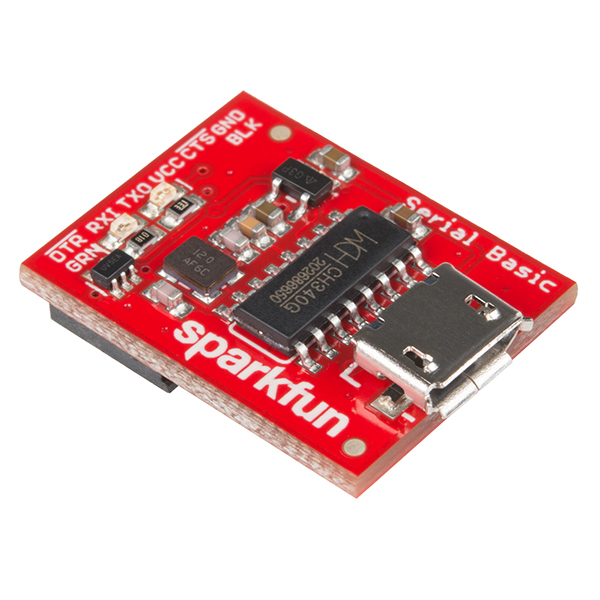
Sparkfun USB-to-UART Bridge
Be sure to only use 3.3V module. Do not 5V module
For connecting to the SWD port, use ST-Link v2 in-circuit debugger and programmer from STM. In testing, ST-Link v2 clone will not work. The ST-Link v2 should atleast be reconizeable by the STM32CubeProgrammer. A cheap and alternative way to get an authorized ST-Link is to buy a Nucleo board, cut the top part which contain the ST-Link and use it as an external programmer.
Reference
The project won't be possible without the amazing work from people across the globe. The following are the reference to those awesome projects:

Teapotlabs BWLR1E: Compact LoRa Environmental Sensor
*PCBWay community is a sharing platform. We are not responsible for any design issues and parameter issues (board thickness, surface finish, etc.) you choose.
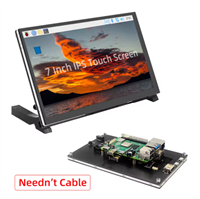
Raspberry Pi 5 7 Inch Touch Screen IPS 1024x600 HD LCD HDMI-compatible Display for RPI 4B 3B+ OPI 5 AIDA64 PC Secondary Screen(Without Speaker)
BUY NOW- Comments(4)
- Likes(4)
-
 Engineer
Mar 26,2025
Engineer
Mar 26,2025
-
 Marc Wilson
Sep 01,2024
Marc Wilson
Sep 01,2024
-
 Markus Hochstrasser
Feb 16,2023
Markus Hochstrasser
Feb 16,2023
-
 Michel Dana
Sep 09,2022
Michel Dana
Sep 09,2022
- 2 USER VOTES
- YOUR VOTE 0.00 0.00
- 1
- 2
- 3
- 4
- 5
- 6
- 7
- 8
- 9
- 10
- 1
- 2
- 3
- 4
- 5
- 6
- 7
- 8
- 9
- 10
- 1
- 2
- 3
- 4
- 5
- 6
- 7
- 8
- 9
- 10
- 1
- 2
- 3
- 4
- 5
- 6
- 7
- 8
- 9
- 10

-
9design
-
9usability
-
9creativity
-
9content

-
9design
-
8usability
-
10creativity
-
10content
 More by Teapot Laboratories
More by Teapot Laboratories
-
 Teapotlabs BWLR1E: Compact LoRa Environmental Sensor
Teapot BWLR1E is a solar-powered wireless LoRa environmental sensor capable of sensing temperature, ...
Teapotlabs BWLR1E: Compact LoRa Environmental Sensor
Teapot BWLR1E is a solar-powered wireless LoRa environmental sensor capable of sensing temperature, ...
-
 Teapotlabs BWLR3D: Compact Asset Tracker and Environmental Sensor ( LoRa + Bluetooth + External Antenna )
Teapot BWLR3D is an Asset Tracker and Environmental Sensor with Solar Energy Harvesting. The device ...
Teapotlabs BWLR3D: Compact Asset Tracker and Environmental Sensor ( LoRa + Bluetooth + External Antenna )
Teapot BWLR3D is an Asset Tracker and Environmental Sensor with Solar Energy Harvesting. The device ...
-
 Teapotlabs Plantpal: Your pal in plant care!
Meet Teapotlabs Plantpal - Your pal in plant care! This adorable device uses capacitive sensing to m...
Teapotlabs Plantpal: Your pal in plant care!
Meet Teapotlabs Plantpal - Your pal in plant care! This adorable device uses capacitive sensing to m...
-
 Teapotlabs BWLR1E Programmer
Teapotlabs BWLR1E Programmer is a device to support programming Teapotlabs BWLR1E without soldering ...
Teapotlabs BWLR1E Programmer
Teapotlabs BWLR1E Programmer is a device to support programming Teapotlabs BWLR1E without soldering ...
-
 Teapotlabs Feather RAK3172: Low-cost LoRaWAN Development Board
Teapot Feather RAK3172 breaks out RAKwireless RAK3172 to an Adafruit Feather-compatible format.At th...
Teapotlabs Feather RAK3172: Low-cost LoRaWAN Development Board
Teapot Feather RAK3172 breaks out RAKwireless RAK3172 to an Adafruit Feather-compatible format.At th...
-
 Teapotlabs BWLR3D: Compact Asset Tracker and Environmental Sensor
Teapot BWLR3D is an Asset Tracker and Environmental Sensor with Solar Energy Harvesting. The device ...
Teapotlabs BWLR3D: Compact Asset Tracker and Environmental Sensor
Teapot BWLR3D is an Asset Tracker and Environmental Sensor with Solar Energy Harvesting. The device ...
-
-
mammoth-3D SLM Voron Toolhead – Manual Drill & Tap Edition
290 0 0 -
-
AEL-2011 Power Supply Module
825 0 2 -
AEL-2011 50W Power Amplifier
683 0 2 -
-
-
Custom Mechanical Keyboard
880 0 0 -
Tester for Touch Screen Digitizer without using microcontroller
497 2 2 -
Audio reactive glow LED wristband/bracelet with NFC / RFID-Tags
454 0 1 -
-





















